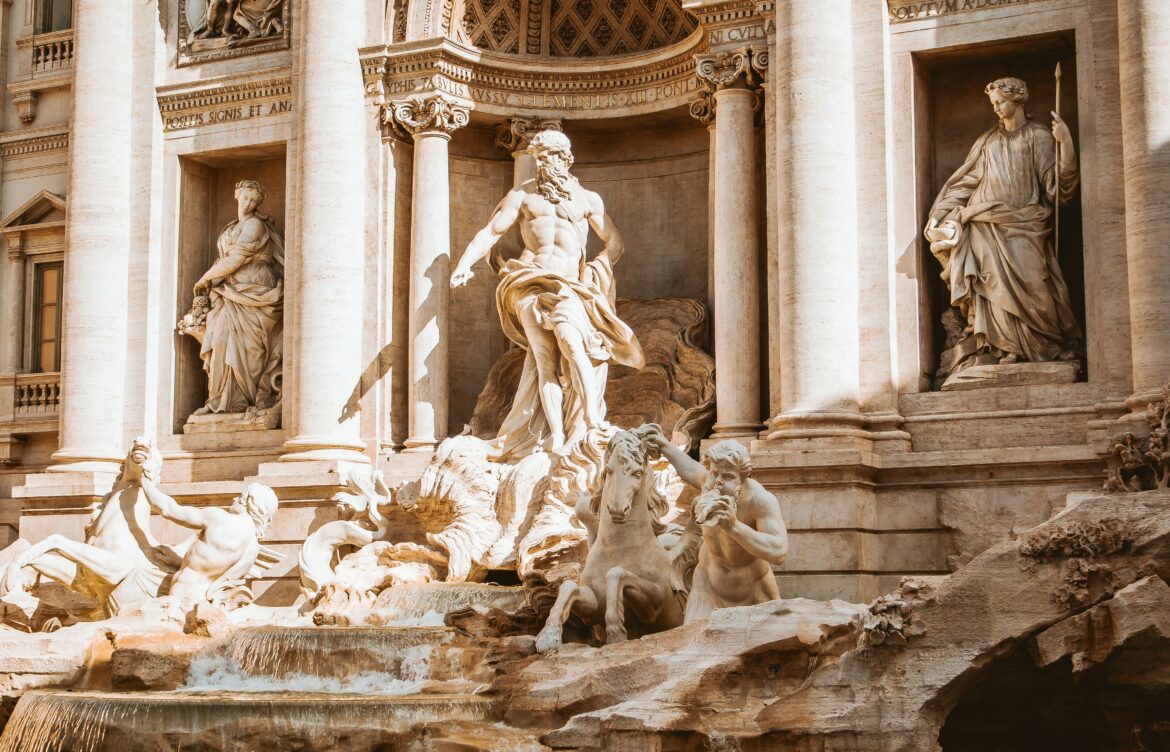
Italy’s Top 10 UNESCO World Heritage Sites: Your Ultimate Travel Guide
Italy isn’t just a country. It’s a living museum. With 58 UNESCO World Heritage Sites, more than any other nation, Italy offers travelers an unmatched journey through human civilization. But here’s the thing: visiting these incredible places isn’t just about checking boxes on a bucket list. It’s about stepping into stories that have shaped our world.
I’ve spent years exploring these remarkable destinations, and what I’ve discovered goes far beyond guidebook descriptions. Each site tells a unique story of human ingenuity, artistic brilliance, and cultural evolution. More importantly, each offers modern travelers the chance to connect with something profound if you know how to experience them properly.
According to Dr. Francesco Bandarin, former Director of UNESCO’s World Heritage Centre, “Italy’s heritage sites represent not just monuments, but living testimonies of human creativity across millennia.” This isn’t just academic speak. It’s the key to transforming your Italian journey from ordinary tourism into something truly meaningful.
Why These 10 Sites Matter More Than Ever
The sites I’ve selected represent Italy’s most compelling stories. From Rome’s eternal legacy to the Dolomites’ breathtaking landscapes, each destination offers something you simply cannot experience anywhere else. But here’s what most travelers miss: the real magic happens when you understand the deeper narrative each place represents.
Mass tourism has created challenges at many of these sites. Crowds, rushed visits, and surface-level experiences have become the norm. But with the right approach and insider knowledge, you can still discover the transformative power these places hold.
1. Historic Centre of Rome: Where Eternity Begins
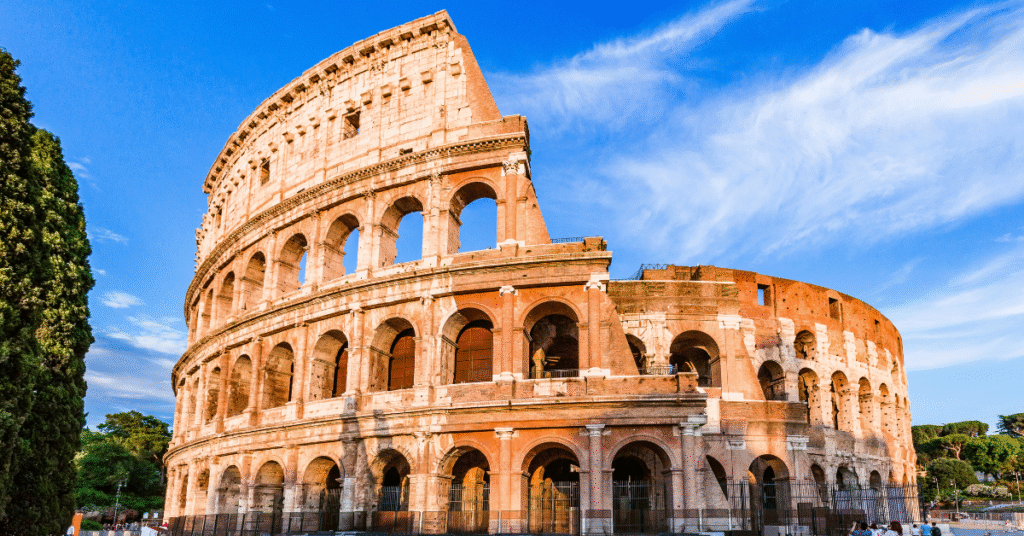
Rome defies easy categorization. This isn’t just an archaeological site. It’s a living timeline where 2,000 years of history unfold across every street corner. The UNESCO designation covers everything from ancient city walls to St. Peter’s Basilica, creating the world’s most comprehensive urban heritage landscape.
Walking through Rome means stepping between empires. One moment you’re standing where gladiators fought in the Colosseum, the next you’re admiring Renaissance masterpieces in Vatican City. The Roman Forum, once the beating heart of the ancient world, sits just steps from medieval churches and baroque fountains.
What sets Rome apart from other archaeological destinations is its seamless integration of past and present. Ancient ruins aren’t cordoned off in museums; they’re part of the city’s daily rhythm. Romans grab coffee near 2,000-year-old temples and commute past monuments that witnessed the rise and fall of emperors.
My Insider Strategy: The Roma Pass is your key to efficient exploration, but timing is everything. Visit major attractions between 8 AM and 10 AM to avoid the worst crowds. Book Colosseum underground tours in advance; they sell out months ahead, but offer access to areas most tourists never see.
The real secret? Explore on foot during the early evening. As tour groups disappear, Rome reveals its quieter magic. The Pantheon at sunset, with light streaming through its ancient oculus, creates moments that no photograph can capture.
Essential Visit Length: 4-5 days minimum to properly absorb the layers of history without feeling rushed.
2. Historic Centre of Florence: Renaissance Perfection
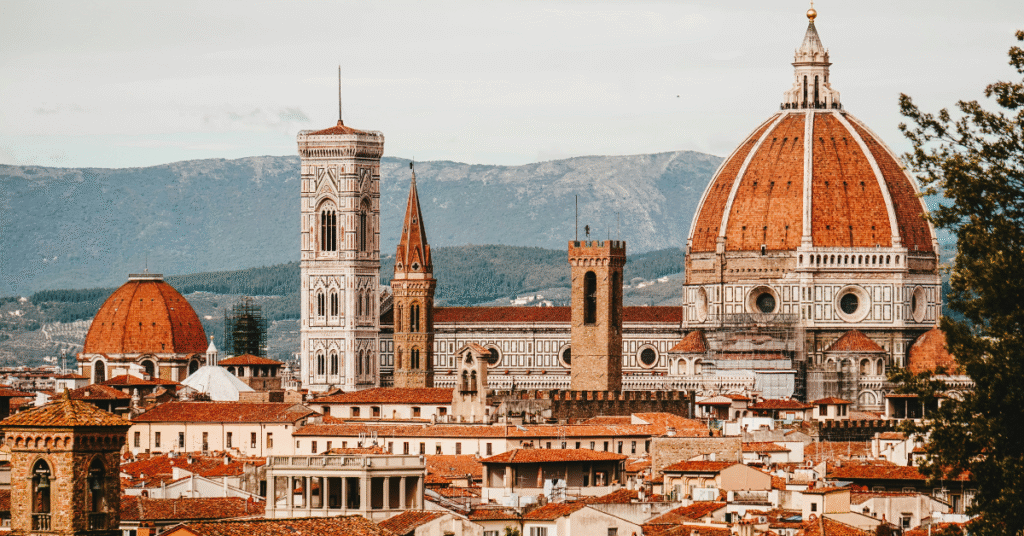
Florence changed the world. This single city sparked the Renaissance, giving birth to artistic innovations that still influence how we see beauty today. The Historic Centre contains 600 years of extraordinary creativity packed into a walkable urban core.
But Florence presents a modern challenge that threatens to undermine its magic: overwhelming crowds. During peak season, two-hour waits at the Uffizi Gallery are common. Without proper planning, you’ll spend more time in lines than experiencing art.
The solution lies in understanding Florence’s rhythm. The city transforms at different times of day. Early morning belongs to the locals’ markets bustle, cafes fill with residents, and major attractions open to smaller crowds. Late afternoon brings golden light that illuminates Renaissance facades exactly as their creators intended.
Critical Planning Advice: Pre-book everything. The Uffizi, Accademia Gallery (home to Michelangelo’s David), and Duomo climb require reservations. I cannot stress this enough: spontaneous visits to these attractions are nearly impossible during tourist season.
The Duomo climb is particularly special. Those 463 steps lead to views that help you understand why Florence became the Renaissance epicenter. From above, you see how the city’s compact layout fostered the creative exchanges that produced artistic masterpieces.
My Secret Spot: Visit the Oltrarno district in late afternoon. This “other side of the Arno” maintains authentic Florentine character. Artisan workshops still operate as they did centuries ago, and local trattorias serve meals without tourist markups.
Essential Visit Length: 3-4 days to experience both the major masterpieces and Florence’s living culture.
3. Venice and its Lagoon: Engineering Marvel on Water
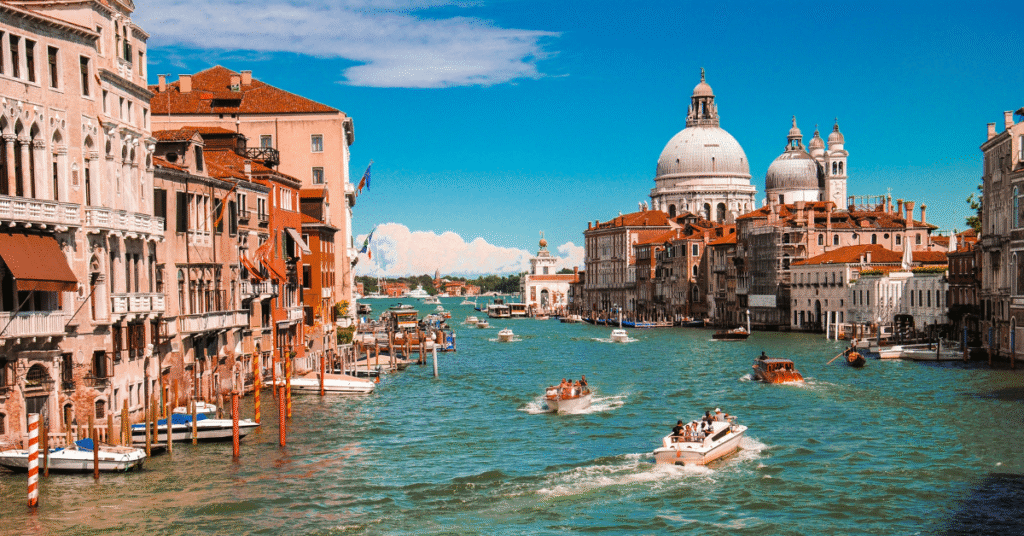
Venice shouldn’t exist. Building a major city on 118 islands in a lagoon defies logic, yet here stands one of humanity’s most beautiful achievements. The entire Venetian Lagoon, including Venice proper and outlying islands, represents an extraordinary example of human adaptation to challenging natural conditions.
Beyond its obvious beauty, Venice tells a story of innovation. The city developed unique building techniques, created complex canal systems, and established trade networks that connected Europe with the rest of the world. The Doge’s Palace, St. Mark’s Basilica, and the Grand Canal showcase architectural solutions found nowhere else on earth.
But Venice faces serious challenges. Over-tourism and climate change threaten its survival. The city experiences regular flooding, and massive cruise ships bring crowds that overwhelm its delicate infrastructure. This makes responsible travel more important than ever.
Experiencing Venice Properly: Start early or stay late. The city transforms when day-trippers leave. Evening light on canal waters creates magical reflections, and you can actually hear your footsteps on ancient stone bridges.
Explore beyond the main tourist circuit. The Venetian Lagoon includes fascinating islands that most visitors never see. Murano’s glassmaking traditions date back centuries. Burano’s colorful houses create one of Italy’s most photogenic villages. These islands offer authentic Venetian culture without crowds.
Transportation Tip: Use vaporettos (water buses) strategically. The slow journey up the Grand Canal serves as a moving tour of Venetian architecture. Each palazzo tells stories of merchant families who built Venice’s maritime empire.
Essential Visit Length: 3-4 days to experience both Venice proper and the lagoon islands.
4. The Amalfi Coast: Where Land Meets Sea
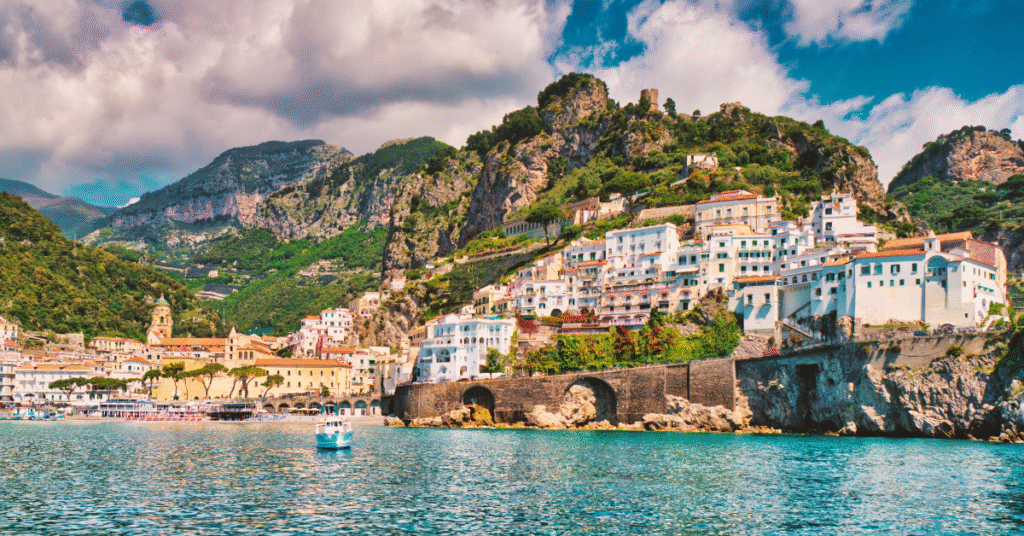
The Amalfi Coast represents perfect harmony between human creativity and natural beauty. Dramatic cliffs, terraced vineyards, and colorful villages create a landscape that has inspired artists for centuries. This UNESCO site recognizes not just scenic beauty, but a thousand-year history of communities adapting to challenging coastal terrain.
Positano clings impossibly to cliffs. Amalfi’s maritime republic once rivaled Venice. Ravello offers gardens that seem to float above the Mediterranean. Each town developed unique solutions to coastal living, creating architectural traditions found nowhere else.
But the Amalfi Coast comes with serious logistical challenges. The famous coastal road (SS163) is narrow, winding, and often congested with tour buses. Parking is limited and expensive. Without proper planning, transportation can dominate your experience.
My Transportation Solution: Skip the rental car stress. Private drivers know every curve and parking option. Ferries offer stunning coastal views while avoiding road congestion entirely. The boat journey from Positano to Amalfi reveals the coast’s full dramatic scope.
Hiking Alternative: The Path of the Gods (Sentiero degli Dei) provides breathtaking perspectives impossible to see from the road. This ancient pathway connects Bomerano to Nocelle, offering views that explain why this coast inspired countless artistic masterpieces.
Local Experience: Taste sfusati lemons, the enormous citrus fruits that grow in coastal terraces. Their unique flavor, protected by EU designation, creates limoncello unlike anywhere else. Local cooking classes teach traditional recipes using these remarkable ingredients.
Essential Visit Length: 4-5 days to experience multiple towns without rushing.
5. Archaeological Areas of Pompeii and Herculaneum: Time Frozen in Tragedy
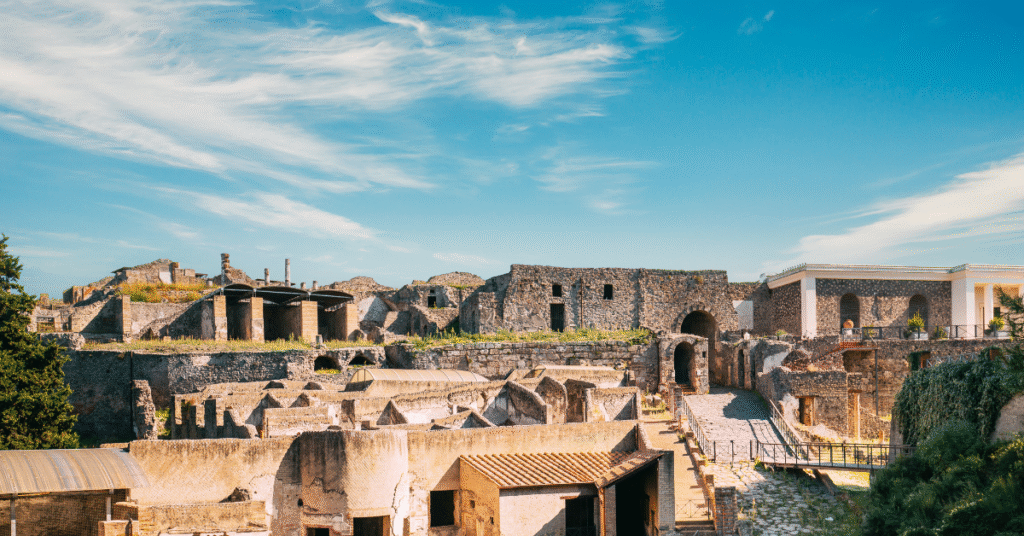
Mount Vesuvius’s eruption in 79 AD created an unparalleled archaeological treasure. Both cities offer windows into Roman daily life, but they tell different stories due to how they were destroyed.
Pompeii, buried in ash, preserves grand public spaces and urban planning. Walking its streets feels like exploring a ghost city where life stopped suddenly. The amphitheater, forum, and wealthy villas showcase Roman society at its height.
Herculaneum offers something more intimate. Buried under thick volcanic mud, it preserved organic materials impossible to find elsewhere. Wooden furniture, papyrus scrolls, and intricate frescoes survived intact. This smaller site provides details about Roman domestic life that larger Pompeii cannot match.
Choosing Between Them: Visit both if possible, but understand their different strengths. Pompeii impresses with scale and drama you feel the magnitude of the catastrophe. Herculaneum fascinates with preservation details; you see how the Romans actually lived.
Practical Considerations: Both sites require significant walking on uneven ancient stone. Bring comfortable shoes, sun protection, and water. Summer temperatures can be extreme, and shade is limited.
Audio guides or professional guides are essential. Without historical context, these sites remain impressive but incomprehensible. The stories behind the ruins, from political graffiti to ancient fast food, bring the ancient world to life.
Essential Visit Length: Full day for Pompeii, half day for Herculaneum. Both in one day feels rushed.
6. The Trulli of Alberobello: Fairytale Architecture
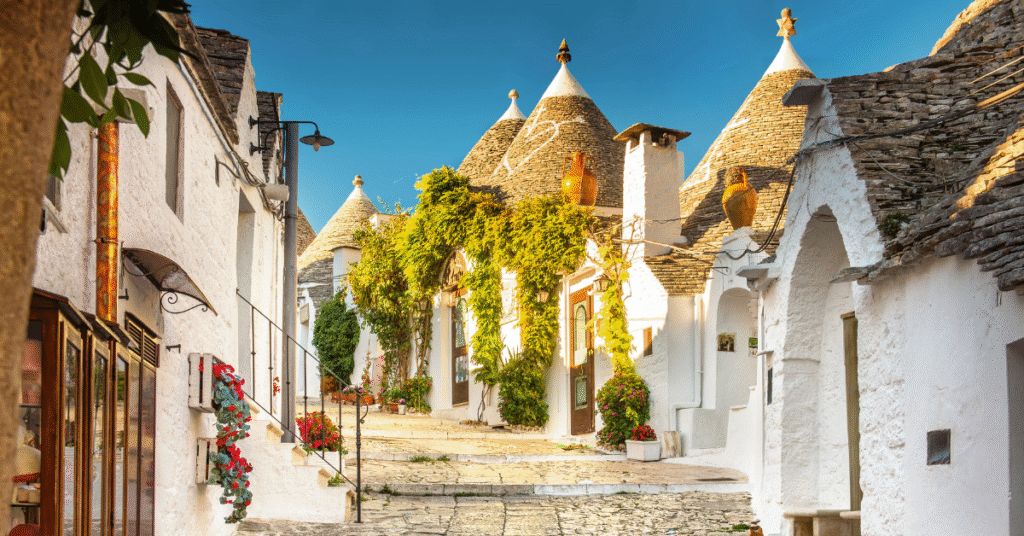
Alberobello looks like something from a children’s story. Over 1,500 trulli, cone-shaped limestone houses, cluster together in a unique urban landscape. These buildings represent a construction technique thousands of years old, built without mortar using carefully balanced stones.
The trulli tell stories of ingenuity and resistance. Local legend claims they were designed for quick dismantling to avoid property taxes. Whether true or not, this tale reflects the resourcefulness of southern Italian communities facing external pressures.
The two main districts offer different experiences. Rione Monti caters to tourists with shops and restaurants. Rione Aia Piccola maintains residential character, showing how people actually live in these unique buildings.
Timing Your Visit: Early morning or late evening provides the best experience. Tour buses typically arrive between 10 AM and 4 PM. Outside these hours, you can photograph trulli without crowds and experience the town’s peaceful atmosphere.
Ultimate Experience: Stay overnight in a converted trullo. These accommodations range from basic to luxurious, but all offer the chance to sleep inside UNESCO World Heritage architecture. Waking up in a trullo, especially during quiet early morning hours, connects you with this ancient building tradition.
Local Culture: Pasta-making classes and street food tours reveal Puglian culinary traditions. The region’s olive oil, produced from ancient groves, creates flavors distinct from other Italian regions.
Essential Visit Length: 1-2 days, with overnight stay highly recommended.
7. Piazza del Duomo, Pisa: More Than the Leaning Tower
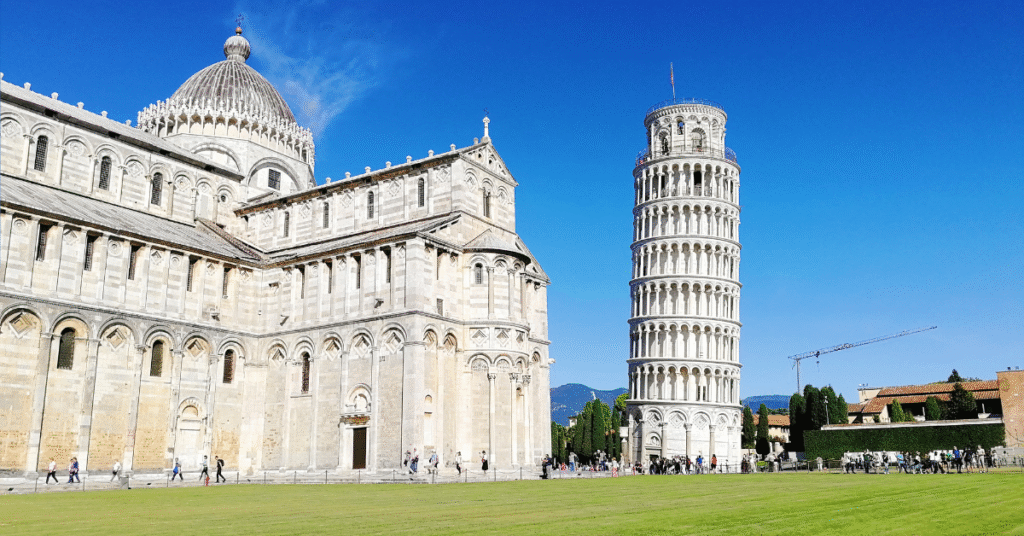
Most visitors see Pisa as a quick photo stop with the Leaning Tower. This misses the point entirely. The Piazza del Duomo (Field of Miracles) contains four architectural masterpieces that together represent medieval achievement at its finest.
The cathedral showcases Romanesque architecture with Islamic and Byzantine influences, evidence of Pisa’s maritime connections. The baptistery demonstrates acoustic engineering that still amazes visitors today. The cemetery (Camposanto) contains frescoes and sculptures spanning centuries. The famous bell tower happens to lean, but its architectural significance extends far beyond its tilt.
Galileo’s association with the tower adds scientific importance. His experiments here helped establish principles of physics that changed human understanding of the natural world.
Essential Booking: Tower climbing requires reservations and specific time slots. Only 30 people can climb at once, and popular times sell out months ahead. The 294-step climb offers unique perspectives of the other monuments and the surrounding landscape.
Beyond the Tower: The cathedral interior contains artistic treasures often overlooked by tower-focused visitors. The bronze doors by Bonanno Pisano and the pulpit by Giovanni Pisano represent medieval craftsmanship at its peak.
Photography Strategy: The classic “holding up the tower” photos work best from the cathedral’s front lawn. But explore different angles, the view from the cemetery walls provides unique perspectives unavailable to most tourists.
Essential Visit Length: Half day for thorough exploration, 2-3 hours for highlights only.
8. City of Verona: Shakespeare’s Stage
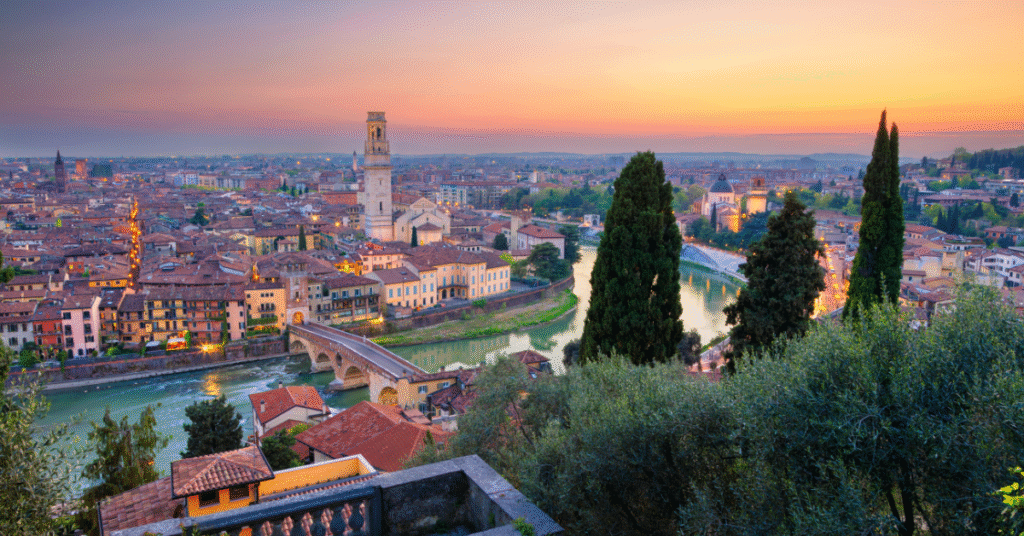
Verona proves that some cities improve with age. Over 2,000 years of continuous development created urban harmony rarely seen elsewhere. Roman ruins blend seamlessly with medieval squares and Renaissance palaces, creating a living textbook of architectural evolution.
The Roman Arena still hosts performances, continuing a tradition spanning nearly two millennia. Once, gladiators fought here; now opera singers perform on the same stage where ancient dramas unfolded. This continuity of purpose makes Verona unique among heritage sites.
Shakespeare chose Verona for Romeo and Juliet, recognizing something romantic about the city’s atmosphere. The medieval streets, ancient bridges, and intimate piazzas create settings that feel naturally dramatic.
Modern Conveniences: The Verona Card provides skip-the-line access to major attractions plus unlimited public transportation. This saves significant time during busy periods and reduces the frustration of waiting in multiple ticket lines.
Hidden Treasures: Beyond the famous sites, Verona offers discoveries. The Giusti Garden provides Renaissance landscape architecture with city views. Castelvecchio Bridge offers perspectives that help you understand Verona’s strategic river location.
Opera Season: Summer brings the Arena Opera Festival outdoor performances in an authentic Roman setting. These productions, some featuring internationally renowned performers, create unforgettable cultural experiences.
Essential Visit Length: 2-3 days for comprehensive exploration, 1 day for major highlights.
9. Cinque Terre: Villages That Defy Gravity
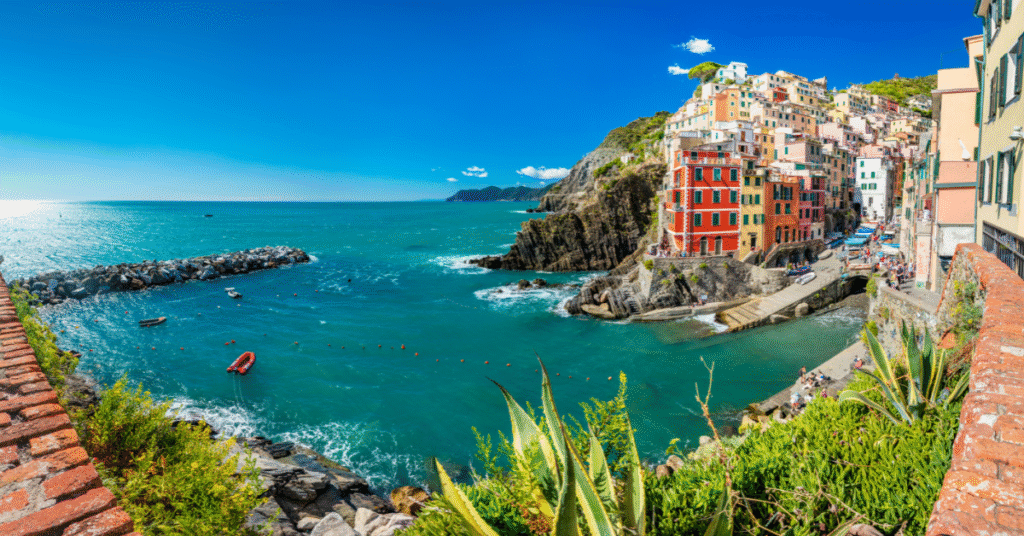
Five villages cling to impossible cliff faces along the Ligurian coast. Cinque Terre represents a thousand years of human determination to thrive in challenging terrain. Terraced vineyards carved into steep hillsides create landscapes that seem to defy both gravity and logic.
Each village developed its own character. Monterosso offers beaches and wine culture. Vernazza provides the most photogenic harbor views. Corniglia perches highest above the sea. Manarola showcases terraced agriculture at its most dramatic. Riomaggiore combines fishing traditions with modern tourism.
The famous Sentiero Azzurro (Blue Trail) connecting all five villages faces frequent closures due to landslides. This reality requires flexible planning and alternative strategies.
Trail Alternatives: High route trails offer better views and fewer crowds than the often-closed coastal path. These paths require more hiking experience but provide perspectives that reveal the full scope of human adaptation to this challenging coastline.
Transportation Strategy: Trains connect all villages efficiently, but consider ferries for scenic coastal views. The boat journey reveals cliff perspectives impossible to see from land-based trails.
Avoiding Crowds: Visit during shoulder seasons (May or September) for pleasant weather with manageable crowds. Summer brings intense heat and overwhelming tourist numbers that can diminish the experience.
Essential Visit Length: 2-3 days to experience multiple villages without feeling rushed.
10. The Dolomites: Alpine Majesty
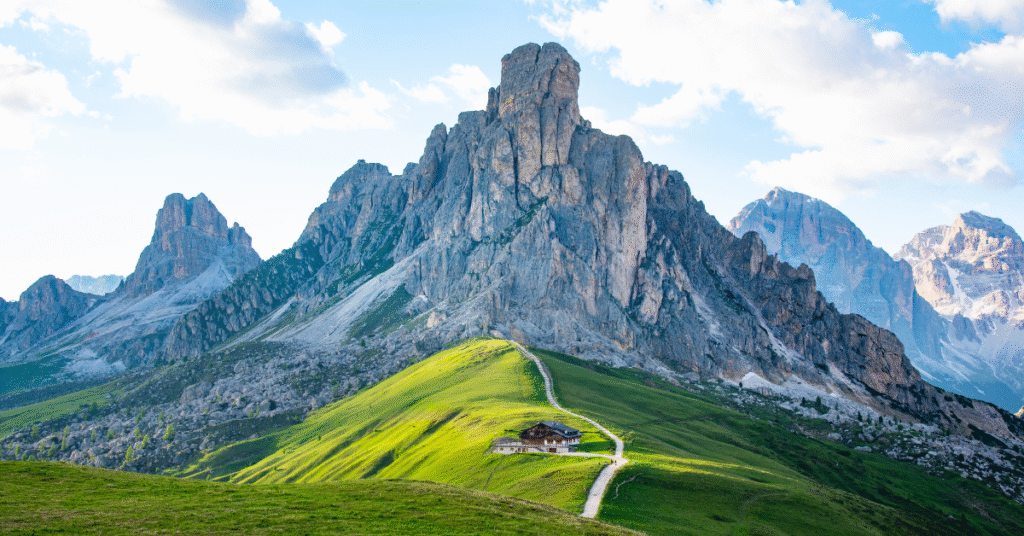
The Dolomites represent UNESCO recognition for pure natural beauty. These “pale mountains” of northeastern Italy create landscapes so dramatic they seem almost fictional. Vertical limestone walls rise directly from green valleys, creating a contrast that photographers dream about.
But the Dolomites offer more than scenery. This region, where German, Italian, and Ladin cultures meet, has produced unique traditions found nowhere else. Architecture reflects this cultural blend. Alpine chalets sit beside Italian villas, creating a visual variety that matches the dramatic terrain.
World War I history adds poignant human stories to natural beauty. Soldiers from opposing armies tunneled through solid rock to fight on these mountains. Museums and preserved trenches tell stories of hardship and heroism in one of history’s most challenging battlefronts.
Seasonal Planning: Summer and fall offer hiking and scenic driving. Winter transforms the region into one of Europe’s premier skiing destinations. Spring brings wildflowers and fewer crowds, but unpredictable weather.
Transportation: Rental cars provide maximum flexibility for exploring this large region, but plan accommodations strategically to minimize daily driving distances. Mountain roads require careful navigation and significant travel time between destinations.
Cultural Immersion: Learn basic phrases in local languages, German and Ladin, in addition to Italian. This effort, however small, opens doors to more authentic local interactions and demonstrates respect for the region’s cultural complexity.
Essential Visit Length: 4-7 days, depending on activities and season.
Planning Your Italian UNESCO Adventure
These ten sites offer enough diversity for multiple trips, each revealing new layers of meaning and beauty. The key to meaningful experiences lies in moving beyond surface-level tourism toward deeper cultural engagement.
Strategic Itinerary Combinations
The Classic Art Triangle (5-7 days): Florence – Pisa – Venice. Perfect for first-time visitors seeking iconic Italian culture. Combines Renaissance masterpieces, architectural marvels, and unique urban experiences.
Southern Discovery (6-8 days): Rome – Amalfi Coast – Pompeii/Herculaneum – Alberobello. Blends ancient history, coastal beauty, and unique architecture in less crowded southern Italy.
Northern Adventure (7-10 days): Venice – Verona – Dolomites – Cinque Terre. Combines cultural cities with outdoor adventures and coastal villages for maximum variety.
Essential Planning Principles
Book in Advance: Popular attractions require reservations. Don’t assume tickets will be available on arrival, especially during peak season (June-September).
Respect Local Communities: These sites are often people’s homes and workplaces. Behave respectfully, follow local guidelines, and consider how your visit impacts resident communities.
Invest in Quality Experiences: Skip-the-line tours, private guides, and off-peak timing transform visits from frustrating to memorable. The price difference between rushed and relaxed experiences is smaller than you think.
Plan for Weather: Italian weather varies dramatically by region and season. Mountain areas require different preparation than coastal destinations.
Making It Meaningful
Italy’s UNESCO sites offer more than beautiful photographs. They provide connections to human stories spanning millennia. The real magic happens when you slow down enough to absorb these stories and understand your place within them.
These places have witnessed empires rise and fall, artists create masterpieces, and ordinary people adapt to extraordinary challenges. By approaching them with curiosity rather than just cameras, you become part of their continuing story.
As someone who’s spent years exploring Italy’s hidden corners and UNESCO treasures through The Chica Travelista, I’ve learned that the most transformative travel moments happen when you move beyond surface-level sightseeing. Each site holds layers of meaning that reveal themselves only to those willing to dig deeper.
Ready to transform your Italian dreams into reality? These UNESCO treasures await, each holding stories that guidebooks can only hint at. The question isn’t whether Italy will change you. It’s how deeply you’ll allow yourself to be transformed.
Want help planning your perfect Italian UNESCO adventure? The Chica Travelista’s travel experts specialize in creating personalized itineraries that unlock the hidden stories behind Italy’s greatest treasures. Let us handle the complex logistics while you focus on the magical experiences that await.
